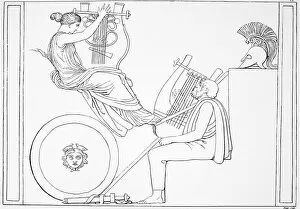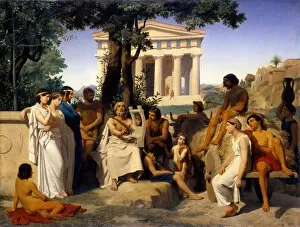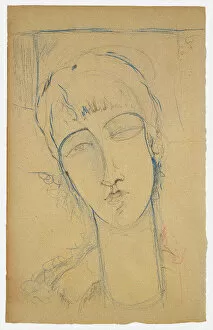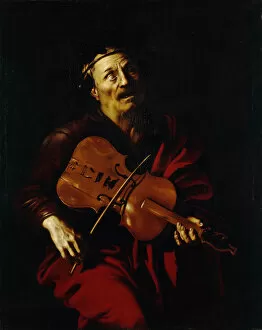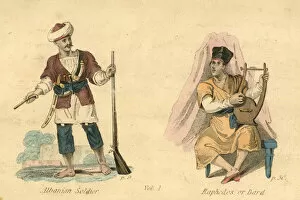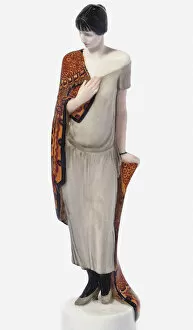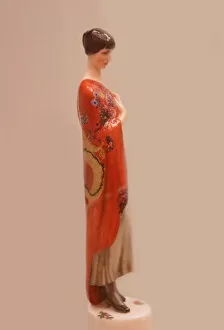Rhapsode Collection
"Rhapsode: The Melodies of Ancient Words and Timeless Tales" In the realm of art, the rhapsode emerges as a captivating figure
For sale as Licensed Images
Choose your image, Select your licence and Download the media
"Rhapsode: The Melodies of Ancient Words and Timeless Tales" In the realm of art, the rhapsode emerges as a captivating figure, weaving together the threads of history and literature. From ancient times to modernity, this enigmatic character has left its mark on countless masterpieces. Anna Akhmatova, a renowned poetess from Russia's golden age, finds herself immortalized in various forms. In Modigliani's 1915 portrait "Ritratto di Donna Rossa, " her striking gaze captures both vulnerability and strength. Danko's rendition in the 1920s showcases her elegance amidst turbulent times. Homer, the legendary Greek poet whose words have echoed through centuries, is depicted by Leloir with reverence. A blind Homer playing the Lira da Braccio transports us to an era where his verses were sung with fervor. The connection between rhapsodes and music continues in Rembrandt van Rhijn's depiction of Homer holding a lute-like instrument. This portrayal emphasizes how their voices harmonize with melodies that transcend time itself. Corot paints "Homer and the Shepherds, " illustrating how even humble shepherds would gather around to listen intently as he recited epic tales. It speaks volumes about his ability to captivate audiences across all walks of life. Makaturin's portrait brings Anna Akhmatova into focus once more; her piercing eyes convey depth beyond words. Meanwhile, Modigliani portrays her as an acrobat in 1911—a testament to her versatility as an artist who defied societal expectations. Amidst these artistic tributes lies another intriguing piece—an Albanian soldier alongside a Rhapsodos—showcasing how this tradition transcends borders and cultures alike. Through these diverse portrayals spanning centuries, we witness not only homage paid to great poets but also glimpses into their souls—their struggles against adversity, their resilience, and the power of their words to inspire generations.

